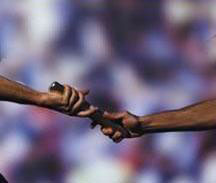(” . . . a moment over the centerline where you have two outside reins.”)
A fledgling dressage rider took her cowboy husband “out back” to show him how much progress she’d been making. That night at the local bar he was telling a few buddies what he’d seen. “Well, she said ‘Watch this!’ and proceeded to jes go round ‘n round in a circle in one direction. Then she said ‘And watch this’ and she went round ‘n round ‘n round in the other direction. Then she stopped, looked proud, and said ‘So how ‘bout that?’”
The woman’s perplexed husband had no idea how complicated it was for her (among other things) to get her horse from one direction to the other. Just when many novice riders get the hang of the “inside leg to outside hand” thing and start to shape their horse’s outline, it all falls apart when they try to make a figure 8 or a serpentine. Why? Most likely because they’re focusing on the “new” inside rein to turn the horse and start the change of bend.
Here are a few simple ways to overcome that problem. Imagine your horse is on a left 20-meter circle, and you want to change out of it to a right hand one. First of all, before you increase the right rein pressure to reposition him, be sure you pick up a more solidified contact on the left one.
The mechanism involved reminds me of a pair of track athletes in  relay race passing the baton. Novice riders tend to make the transfer as though Runner A simply tosses the baton over to Runner B. In fact, when orchestrated properly, there’s a moment when both runners are firmly grasping it. The rider equivalent is to have a moment over the centerline where you have two outside reins. Picking up the new outside contact and shifting the horse over into it must precede the bend change and the softening of the new inside one. Otherwise you momentarily abandon him, leaving your horse without a clue about where the bit is and how he should be connecting into it.
relay race passing the baton. Novice riders tend to make the transfer as though Runner A simply tosses the baton over to Runner B. In fact, when orchestrated properly, there’s a moment when both runners are firmly grasping it. The rider equivalent is to have a moment over the centerline where you have two outside reins. Picking up the new outside contact and shifting the horse over into it must precede the bend change and the softening of the new inside one. Otherwise you momentarily abandon him, leaving your horse without a clue about where the bit is and how he should be connecting into it.
If you do lose your horse at the change, try these intermediate steps. Be sure you are able, while staying on one circle, to be able to bend and counterbend him maintaining the frame and connection. Also ride from one circle to the other without changing the bend at all. This will make you engineer the change of direction more with leg and weight. Once you can successfully change from one circle to the other, then change the bend. Before long, you’ll be able to perform both functions simultaneously.
